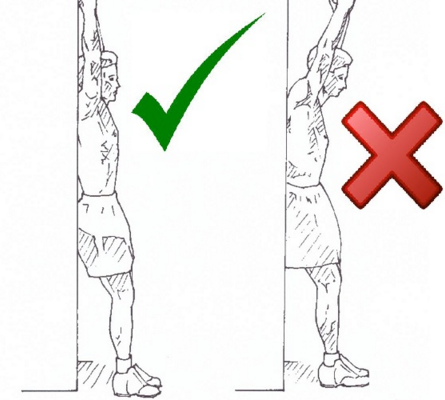SPOTLIGHT: Mobility in Discus Throwers part 1 of 5

Lars Riedel working on his Thoracic Rotation
Understanding the capabilities of athletes is not always something we see on the surface. Limitations in mechanics and technique can require us as coaches and service providers to take a closer look at the physiology of our athletes. As we discover more about what we are working with, the strengths and weaknesses of each individual, we can better prescribe methods and training protocols to improve upon them.
Where do we look and how?
There are a number of musculoskeletal screening schedules to help us as coaches understand why our athletes may or may not be able to achieve the certain mechanical demands our individual disciplines require. Having a trusted and engaged physiotherapist or exercise physiologist is paramount as we work with athletes and expect them to perform at a high level.
How a service provider communicates is also extremely important to our coaching values and I will touch on this in another post later in this SPOTLIGHT series.
(To keep up to date with all posts in this series subscribe to our newsletter here)
Spotlight on the Discus Thrower
Being a rotational explosive discipline there are a number of key areas we can check as coaches and athletes to ensure we develop and maintain movement efficiency as well as reduce the prevalence of injury. Below are 5 key areas I believe to be important to allow technical efficiency:
THORACIC ROTATION:

Rotation: L & R
THORACIC EXTENSION

Thoracic Extension
HIP INTERNAL/EXTERNAL ROTATION

Hip: Int & Ext Rotation
HIP FLEXION/EXTENTION

Thomas Test
ANKLE FLEXION/EXTENSION

Ankle Range
What do we do once we have assessed these strengths of weaknesses?
We can:
- Discuss our findings with a physiotherapist as some areas may require some soft tissue treatment or rehabilitation.
- Formulate a protocol to either improve range on rigid areas
- Formulate a protocol to improve proprioception (stability) in hypermobile areas.
- Add these to warm up routines
- Check regularly to evaluate improvement
In part 2 of SPOTLIGHT we will cover an example of some exercises to outline maximising range, and improving tension. and how to incorporate these into your daily routines.
Click HERE to stay up to date.












